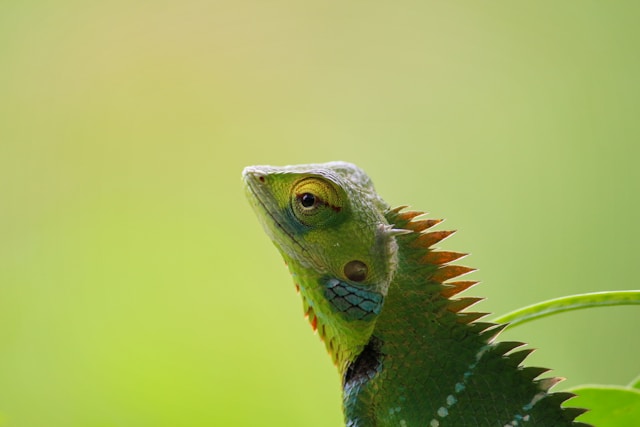Forest officers and veterinary surgeons work together to rescue and rehabilitate endangered chameleons in Wayanad
In a heartwarming rescue operation, a wild chameleon was saved from the rubble at the landslide site in Meppadi, Wayanad. The landslide, which has caused significant destruction, has seen the dedication of rescue workers to save as many lives as possible, including the local wildlife.
On Monday morning, forest officers discovered the chameleon covered in mud and exhausted. Dr. Sharmadha, a Government Veterinary Surgeon part of the animal husbandry department team at Meppadi, detailed the chameleon’s condition. “The chameleon’s eyes were caked with mud, and it had minor injuries on its claws and tail. We cleaned its eyes with sterile water and administered medication,” Dr Sharmadha explained.
After receiving care, the chameleon’s condition improved, and it was handed back to the forest department. “We kept the chameleon under observation for a few hours before releasing it back into the wild in the afternoon,” said Rajeev Unnikrishnan, deputy range officer of the Rapid Response Team under the forest and wildlife department at Meppadi. The chameleon, identified as a Nilgiri forest lizard (Calotes nemoricola), is endemic to the Western Ghats and protected under the Wildlife Act. It was released into its natural habitat in the Meppadi forests.
Embed from Getty ImagesThe rescue team found the chameleon near a devastated house at Chooralmala. Unfortunately, there were two chameleons at the site, but only one survived. “Both were drenched in mud, and the rescued one could not open its eyelids due to mud accumulation,” a forest officer involved in the rescue operation reported.
A team from Vantara, a wildlife rescue and rehabilitation centre established by Reliance Industries, expressed interest in adopting the chameleon. However, forest officers declined the request, citing rules that protect the wildlife’s natural habitat and prevent their removal.
The rescue of the chameleon follows another attempt to save a Malabar Giant Squirrel, who sadly does not survive. “The squirrel was found in the sludge and had suffered serious injuries. It was brought to us, but unfortunately, we couldn’t save it,” Dr. Sharmadha said.
These rescues highlight the commitment of the teams working at the landslide site to preserve wildlife. Each life, whether human or animal, is precious, and their efforts in the face of disaster are commendable.
Analysis:
Political: The rescue operations at Meppadi underscore the importance of robust disaster management policies and wildlife protection regulations. The active involvement of forest officers and veterinary surgeons highlights the effectiveness of current wildlife laws and the need for continued government support for such initiatives. This event could prompt policymakers to reinforce funding and resources for wildlife rescue operations during natural disasters.
Social: The rescue of the chameleon and the attempt to save the Malabar Giant Squirrel illustrate a growing societal awareness and empathy towards wildlife. Such stories can foster a stronger connection between communities and their natural surroundings, emphasizing the importance of wildlife conservation. They also highlight the crucial role of community involvement and support in rescue operations, showcasing the collective responsibility towards preserving biodiversity.
Racial: While the rescue of animals may not directly relate to racial issues, the principles of compassion, empathy, and action in preserving life resonate across all communities. Efforts to save wildlife in disaster-stricken areas can serve as a unifying force, promoting solidarity and cooperation among diverse groups working towards a common goal of conservation and environmental stewardship.
Gender: The participation of female professionals like Dr Sharmadha in the rescue operations highlights the increasing involvement of women in fields traditionally dominated by men. This inspires and promotes gender equality in wildlife conservation and disaster management. It underscores the importance of diverse perspectives and the crucial contributions women make in these critical areas.
Economical: The rescue efforts also highlight the economic aspects of wildlife conservation. Protected species like the Nilgiri forest lizard play vital roles in their ecosystems, and their preservation can have long-term benefits for biodiversity and eco-tourism, which are significant contributors to the local economy. The involvement of organizations like Reliance Industries in wildlife rescue and rehabilitation demonstrates the potential for public-private partnerships to support environmental and conservation efforts.
